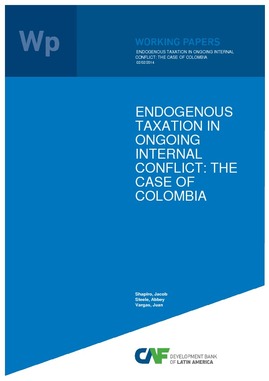Mostrar el registro sencillo del ítem
The Anatomy of Colombian Bureaucratic Hierarchies
| dc.contributor.author | Martínez, Luis | |
| dc.contributor.author | Snowberg, Erik | |
| dc.contributor.author | Ting, Michael | |
| dc.coverage.spatial | América Latina y el Caribe | es_ES |
| dc.coverage.spatial | Colombia | es_ES |
| dc.date.accessioned | 2024-09-27T20:34:45Z | |
| dc.date.available | 2024-09-27T20:34:45Z | |
| dc.date.issued | 2024-07-26 | |
| dc.identifier.citation | Martínez, L., Snowberg, E., & Ting, M. (2024, July 26). The Anatomy of Colombian Bureaucratic Hierarchies. Retrieved from https://scioteca.caf.com/handle/123456789/2296 | en_GB |
| dc.identifier.uri | https://scioteca.caf.com/handle/123456789/2296 | |
| dc.description.tableofcontents | The effective deployment of the bureaucracy is fundamental to government performance and economic development. We study the organizational architecture of the central administration for a large sample of municipal governments in Colombia. Our analysis yields four main findings. First, municipal population is the strongest predictor of the size of the local bureaucracy, but there is substantial variation in bureaucratic size even among municipalities with similar population or expenditure on public personnel. Second, while almost all municipal governments have employees at all hierarchical levels, the share of top managers monotonically decreases and the shares corresponding to lower layers grow as bureaucracies expand. However, only the largest bureaucracies achieve a pyramidal structure. Third, average wages monotonically increase with the hierarchical level, but they remain largely constant within levels for bureaucracies of different sizes. Fourth, larger shares of higher-level bureaucrats are robustly associated with municipal tax revenue per capita, conditional on bureaucratic size | es_ES |
| dc.language.iso | en | es_ES |
| dc.subject | Desarrollo | es_ES |
| dc.subject | Gobernabilidad | es_ES |
| dc.title | The Anatomy of Colombian Bureaucratic Hierarchies | es_ES |
| dc.type | Article | es_ES |
Ficheros en el ítem
Este ítem aparece en la(s) siguiente(s) colección(ones)
-
6.1 Documentos de trabajo en investigación socioeconómica
En esta colección se encuentran los documentos de trabajo sobre temas económicos y sociales prioritarios para la región.



